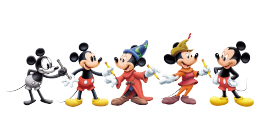Q: My question concerns the early Disney artist Henry Lyon Porter (1900–1951). Hank Porter was born and raised around here in Albion, New York, one of the Erie Canal towns near my suburban Rochester home. I am attempting to gather biographical information about Hank Porter's career at the early Disney Company which began in 1936 with his Disney hiring and move from Buffalo, New York, to Glendale, California, and concluded in October 1951 at Mr. Porter's untimely passing, sadly, due apparently to degenerative chronic ailments. I am aware that Hank Porter—who had an office in the Disney promotions department—was Mr. Disney’s “go-to guy” for original cartoon character designs (and, in some cases, redesigns.) For example, supposedly, Hank Porter is responsible for the redesign on Dick Lundy and Fred Spencer’s originating design for Donald Duck.
My aim, my goal, is to write a detailed monograph, consisting of several pages of biographical information about Hank Porter’s particular workdays at the Disney Company (1936–1951). During World War II, Hank Porter and his Disney colleague Big Roy Williams (who would be a on-screen cast member of The Mickey Mouse Club in the 1950s) created original character designs for the U.S. Military Insignias. One Hank Porter mascot/ insignia supposedly caught the approving eye of General Claire Chennault for his “Flying Tigers” squadron of military transport planes which flew the Pacific and into Southeast Asia. General Chennault gave special commendations to Hank Porter and Roy Williams for their “Flying Tigers” insignia design.
Mark, Rochester, New York
A: We cannot add much to what you already know about Porter. After he was hired at Disney in 1936 as a publicity artist, he penciled and inked several of the Disney Sunday comic pages for newspapers (from 1937–40). With the coming of World War II, he designed insignias for over 1,000 military units.


